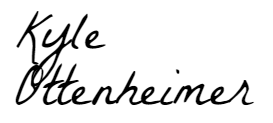There’s a running joke in the world of trading – whatever CNBC “analyst” Jim Cramer says, expect or do the opposite.
This bit's gained so much steam through the years that in March, Tuttle Capital launched its Inverse Cramer Tracker ETF (SJIM). (In fairness, the ETF is down year-to-date.)
However, the sentiment remains.
When it comes to trading stocks, the line “you’re like King Midas’ idiot brother” from the 2012 Coen Brothers film Inside Llewyn Davis more aptly describes Cramer.
So, when he said last week that talks of a recession are now “off the table,” well, it had a chilling effect.
Of course, the stakes of this prediction are far more sweeping than an individual call or put.
And if Cramer is correct, it would mean Jerome Powell and Co. pulled off what only Alan Greenspan did as Fed chairman in 1994…
A soft landing.
Thankfully, we don't rely on Cramer’s analysis to make these determinations. We have data…
Since the war in Ukraine began in early 2022, inflation ran rampant. The consensus was a recession was more or less inevitable.
In March of this year, after the Silicon Valley Bank disaster, the treasury spread's odds of a recession rose to 54.48% – the highest since the severe economic downturn of the early 1980s.
Well, fast forward four months and the picture appears rosier.
In July, the Fed raised interest rates 25 basis points to 5.25%-5.5% – this marked the 11th rate hike in this cycle.
However, last week, Atlanta Fed president, Raphael Bostic, said he doesn’t “expect a rate hike in September will be necessary.”
Regardless, there are dueling winds between bulls and bears. So it’s crucial to get the lay of the economic land and draw our own conclusions…
More than Laying Feathers on the Runway
The components of a soft landing are lost on most. But that’s not surprising.
The notion is easily expressed but harder to define. In essence, all the layperson needs to hear is that it’s avoiding a recession.
And while that’s true – and vital – it is still worthwhile to learn what you should be looking for.
The generally accepted definition of a recession is consecutive quarters of declining gross domestic product (GDP).
Yet rather than get bogged down in the variables that determine GDP, let's talk about this in easily digestible terms.
Citizens’ fears of a recession heightened when they needed $20 for two-dozen eggs.
Or when filling a tank of gas required $100 (more on this later).
But there are signs now that some of these concerns are easing.
We saw Tyson Foods (TYSN) shares fall on declining revenue on account of lower chicken and pork prices.
This is significant because consumers actually bought more chicken this quarter than last. Similarly, while pork purchases were down, the decrease paled in comparison to that seen in pork prices.
We see another example of this in the used-car market. Prices continue to fall from the sky-high marks of 2022.
And while supply remains an issue, analysts expect these prices to drop further.
Simply put, the consumer is feeling the strains of inflation on their pockets less than they did months ago.
The University of Michigan consumer sentiment report echoed this as consumer confidence reached its highest level since October 2021.
That said, while gas prices are lower than 14 months ago, oil wrapped up a stellar month of July… which does add some wind to the bearish sails.
Rounding Out the Picture
While it’s easiest to express the possibility of avoiding a recession from the consumer’s point of view, there are other factors at play too.
A big part comes down to employment.
The ideal scenario for the job market is one that exhibits low unemployment (below 4%) and steady job growth.
As ZipRecruiter Chief Economist Julia Pollak told CNN, “With unemployment below 4%, we see participation [in the job market] pick up because the labor market is sufficiently tight that employers raise wages, improve benefits, improve working conditions, and recruit more broadly.”
U.S. unemployment has been below 4% every month since February 2023.
And while nonfarm payrolls' recent expansion of 187,000 was below expectations of 200,000, it was still higher than the projected 185,000 from June.
Not only that, decreasing unemployment works in lockstep with increasing consumer purchasing power and confidence.
And of course, the crux of all this is the fight to tamp inflation down to 2% – the root of those 11 interest rate hikes.
We are set to receive August’s Consumer Price Index (CPI) number Thursday.
Current expectations are for headline inflation (which includes commodities like oil) to increase 3.3%, while the core rate (which excludes the volatile food and energy sectors) slows down to 4.7%.
It goes without saying we’ll be monitoring that data and everything else that plays into this formula.
And we’ll keep you updated every significant step of the way… even if Cramer’s curse once again comes true
Until then,

Kyle Ottenheimer


